Born on April 16, 1821, in Calais, France, Ford Madox Brown was an English Artist of the Pre-Raphaelites period known for painting moral and historical subjects. Although his work is associated with the Pre-Raphaelite Brotherhood, he was never an official member. Nevertheless, he shared their view that art should be morally educating.
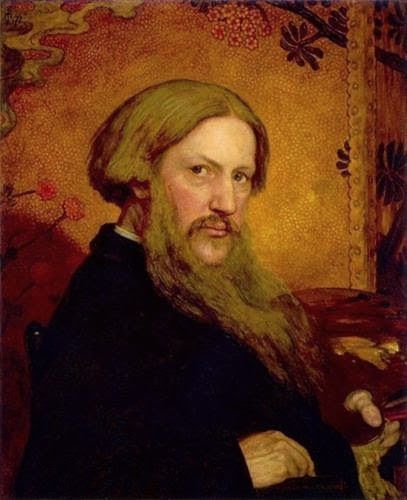
FORD MADOX BROWN, 1877
https://arthur.io/art/ford-madox-brown/self-portrait
Brown’s art education is credited to Bruges and Antwerp, Belgium, which he studied from 1837 to 1839. His art style was influenced by Peter von Cornelius, a member of the former Lukasbund, or Nazarenes. This includes his love for vivid color in his paintings.
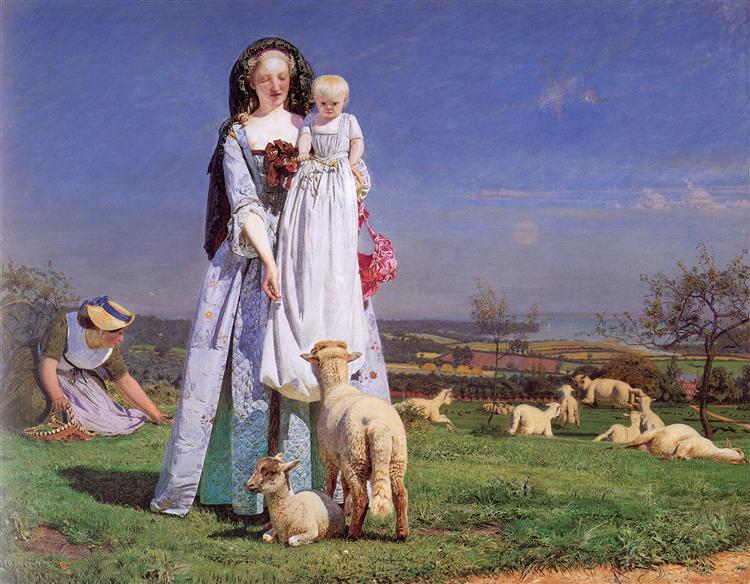
https://www.middlewaysociety.org/ford-madox-brown-1821-1893-the-pretty-baa-lambs-1851/
In Brown’s “Pretty baa Lambs” above, it represents motherhood with his first wife and daughter as models. The mother is pointing at the lambs below as if saying to her daughter, “Look at those pretty baa lambs”. Brown had two wives in his lifetime, and both unfortunately passed before him.
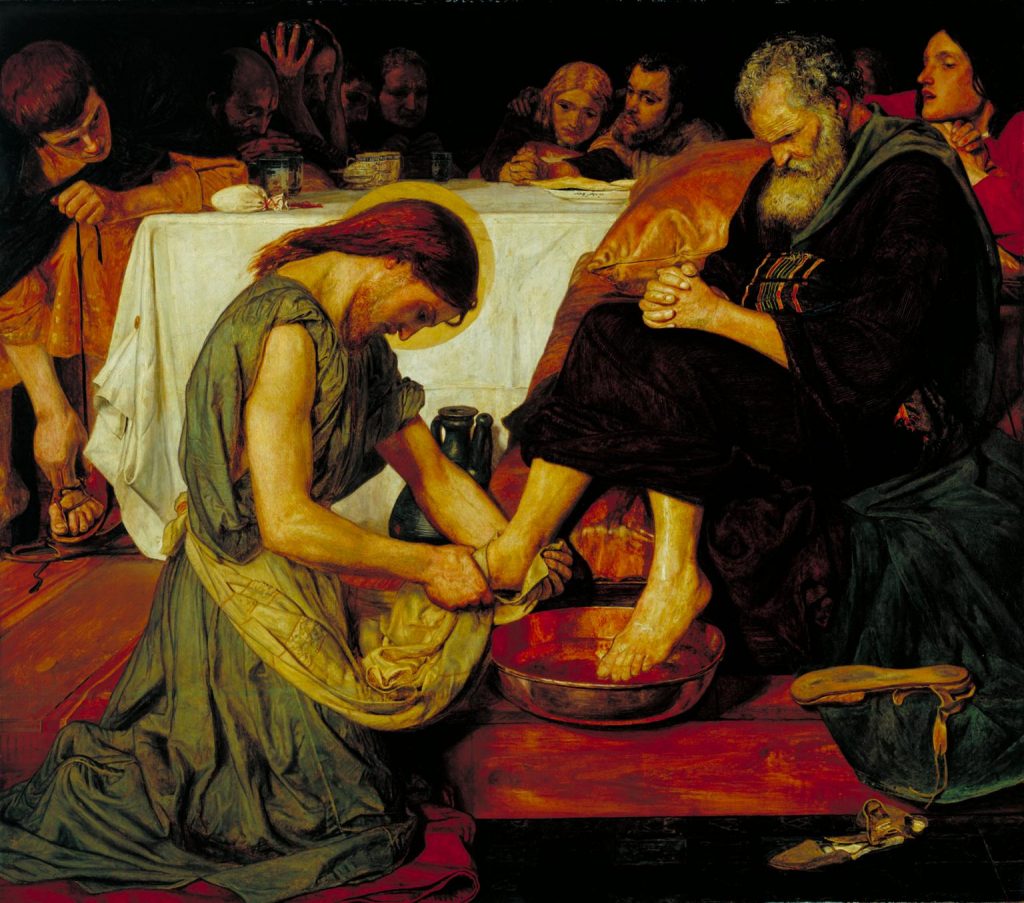
https://www.tate.org.uk/art/artworks/brown-jesus-washing-peters-feet-n01394
This stunning piece has to be my favorite painting of Browns. It illustrates a significant part of the Bible where Jesus washes Peter’s Feet. As a Christian, this is a very powerful piece to me because you can see the emotions Peter is having in reaction to Jesus Christ, the “Son of God”, washing his feet. You can also see the surprise of the disciples surrounding the table with what looks like a combination of surprise, respect, and a subtle disgust of the act. Brown does an amazing job of drawing the viewer’s eyes to the powerful scene, the shine on Peter’s feet is subtle, yet very effective.
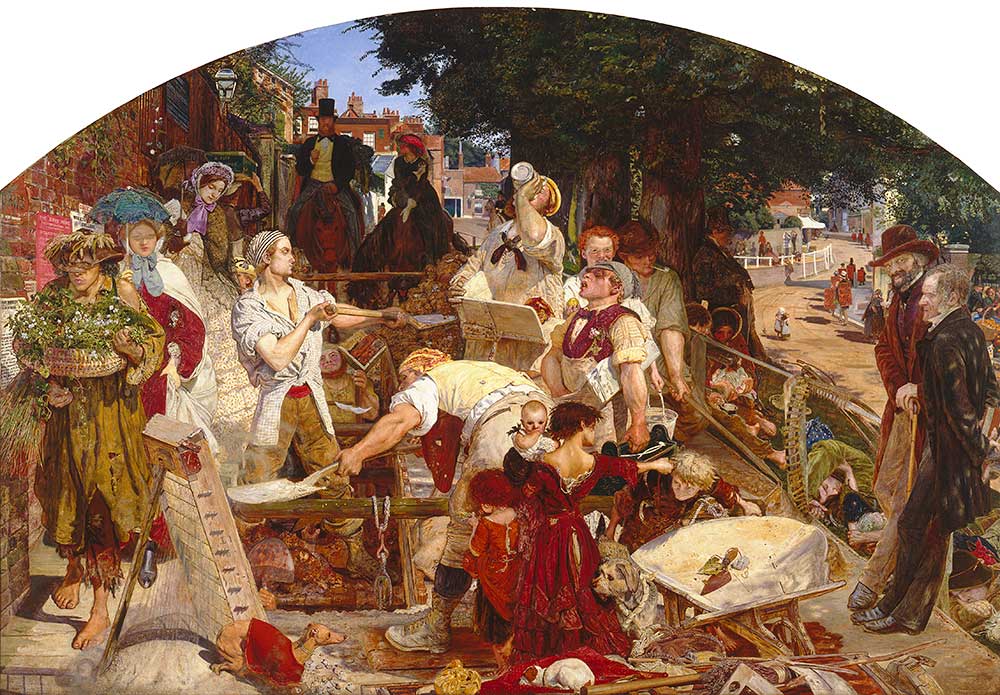
https://manchesterartgallery.org/news/unlocking-work-by-ford-madox-brown/
Brown’s most recognized painting was “Work”, his depiction of the working class and the lifestyle they endured. A lot is going on in this painting; Brown uses children to display a strong visualization of the working class. The viewer’s eyes seem to be drawn to to the small child in the middle, being held up by a young teen in an older women’s dress. The painting shows the struggles of motherless children abandoned to the streets. The eyes of the viewer is then dispersed around the painting to working men, including a shoeless man. The mood painting has a “drunkness” aura to it, which symbolizes society’s ills at the time. Despite the depressing hardship of the painting, there are signs of life in the children playing by the railings.
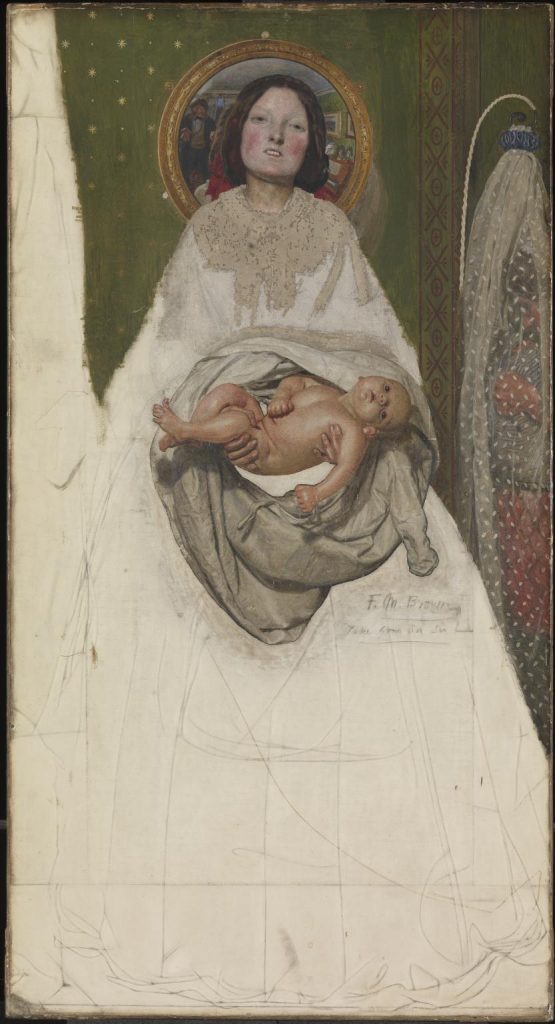
This painting of Browns makes me feel very sad and emotional. it is of his second wife Emma, holding their son Arthur. The emotion on the mother’s face looks strained. Brown never finished this painting due to the tragic death of Arthur in 1857. Brown passed October 6, 1893, leaving his legacy of stunning paintings and tragic life story behind. Whenever looking back on his work, I can’t help but feel sad for him and the tragic deaths he experienced during his career.
Citations:
https://www.tate.org.uk/art/artworks/brown-jesus-washing-peters-feet-n01394
https://www.britannica.com/biography/Ford-Madox-Brown
https://www.middlewaysociety.org/ford-madox-brown-1821-1893-the-pretty-baa-lambs-1851/
https://manchesterartgallery.org/news/unlocking-work-by-ford-madox-brown/
https://www.theguardian.com/artanddesign/2011/sep/16/ford-madox-brown-pre-raphaelite-exhibition
November 15, 2021 at 7:47 pm
Caleb,
Excellent posy on FM Brown here! You have solid information through your research combined with your own personal thoughts and feelings about the artist. Obviously his work resonates with you. I’m giving you a 2/2 here. Also you scored 25/50 on your mid term quiz which is basically just scraping by. Hopefully you’ll do better on the final.
Jeff